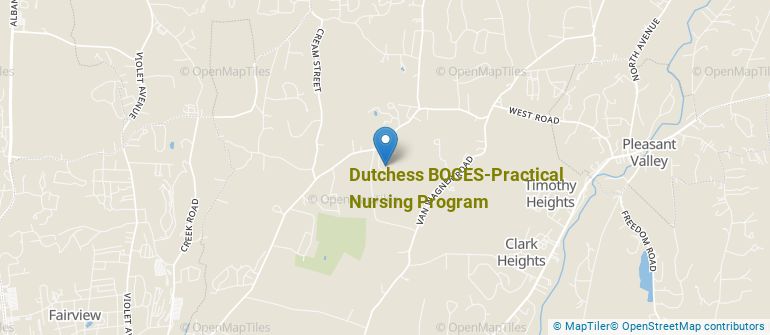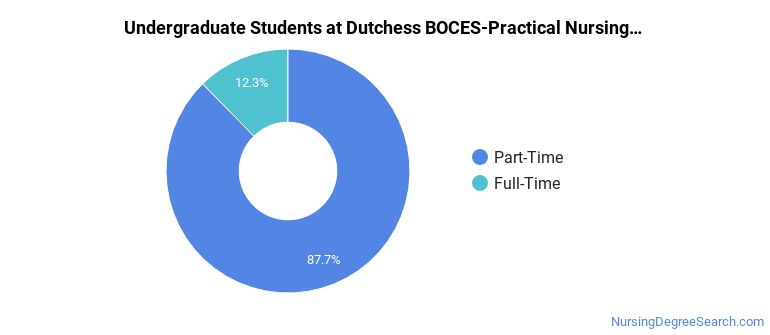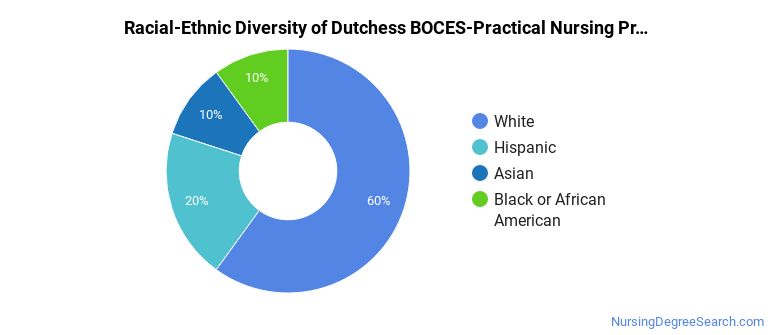Dutchess BOCES-Practical Nursing Program Nursing Programs
Dutchess BOCES-Practical Nursing Program is a public institution located in Poughkeepsie, New York. Dutchess BOCES-Practical Nursing Program is located in the countryside, which is perfect for students who enjoy a rural lifestyle.
Where Is Dutchess BOCES-Practical Nursing Program?

Contact details for Dutchess BOCES-Practical Nursing Program are given below.
| Contact Details | |
|---|---|
| Address: | 5 Boces Road, Poughkeepsie, NY 12601-6599 |
| Phone: | 845-486-8001 |
| Website: | www.dcboces.org |
Admission Requirements for Dutchess BOCES-Practical Nursing Program
| Submission | Required? |
|---|---|
| High School GPA | 1 |
| High School Rank | 3 |
| High School Transcript | 1 |
| College Prep Program | 3 |
| Recommendations | 1 |
| SAT or ACT Scores | 3 |
| TOEFL | 3 |
How Hard Is It To Get Into Dutchess BOCES-Practical Nursing Program?
Can I Afford Dutchess BOCES-Practical Nursing Program?
Student Loan Debt
It's not uncommon for college students to take out loans to pay for school. In fact, almost 66% of students nationwide depend at least partially on loans. At Dutchess BOCES-Practical Nursing Program, approximately 34% of students took out student loans averaging $9,525 a year. That adds up to $38,100 over four years for those students.
Dutchess BOCES-Practical Nursing Program Undergraduate Student Diversity

Racial-Ethnic Diversity
The racial-ethnic breakdown of Dutchess BOCES-Practical Nursing Program students is as follows.

| Race/Ethnicity | Number of Grads |
|---|---|
| Asian | 1 |
| Black or African American | 1 |
| Hispanic or Latino | 2 |
| White | 6 |
| International Students | 0 |
| Other Races/Ethnicities | 0 |
Dutchess BOCES-Practical Nursing Program Nursing Concentrations
The table below shows the number of awards for each concentration.
| Major | Undergraduate Certificate | TOTAL |
|---|---|---|
| Licensed Practical/Vocational Nurse Training | 51 | 51 |
| TOTAL | 51 | 51 |
References
*The racial-ethnic minorities count is calculated by taking the total number of students and subtracting white students, international students, and students whose race/ethnicity was unknown. This number is then divided by the total number of students at the school to obtain the racial-ethnic minorities percentage.
More about our data sources and methodologies.
